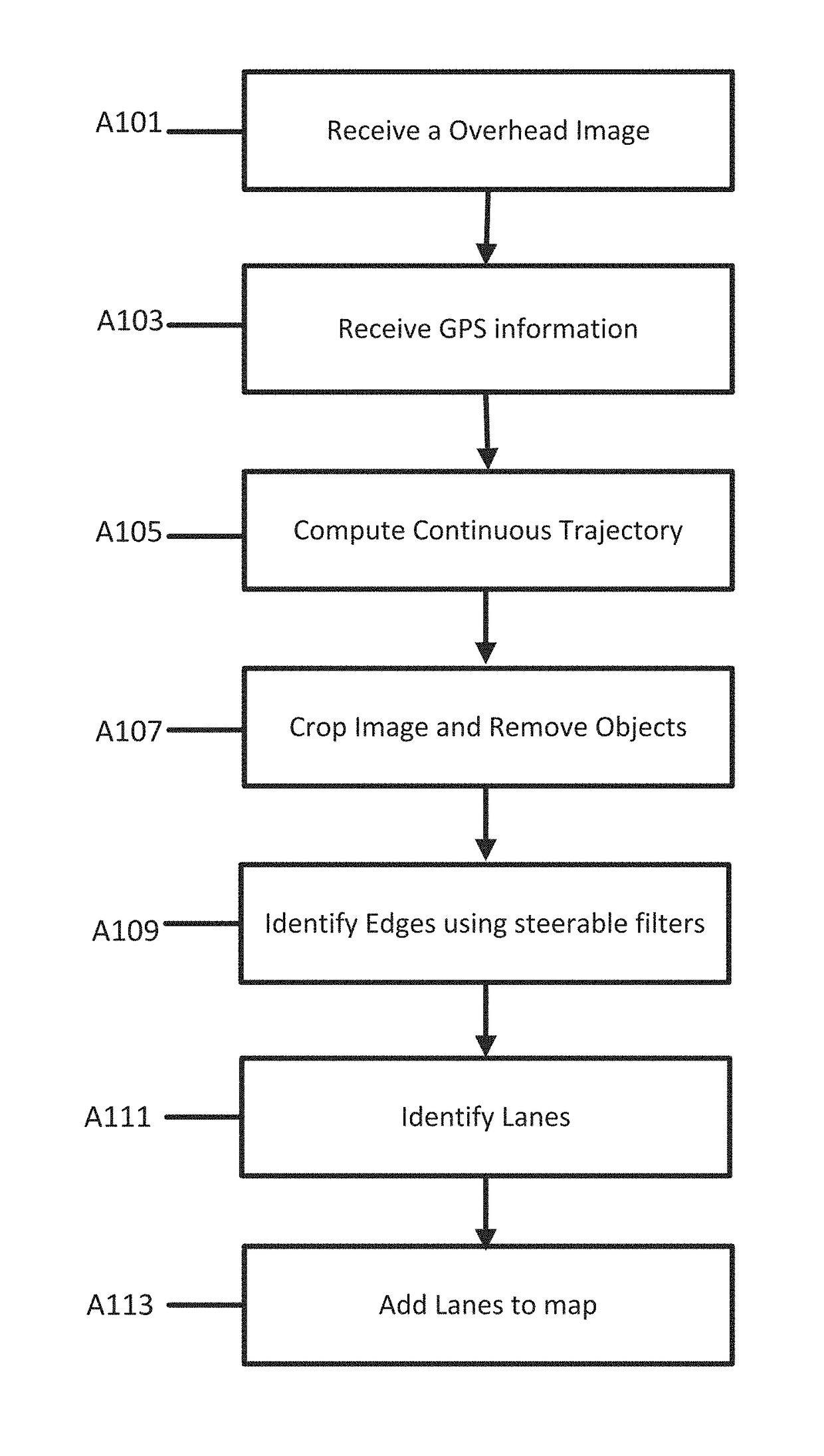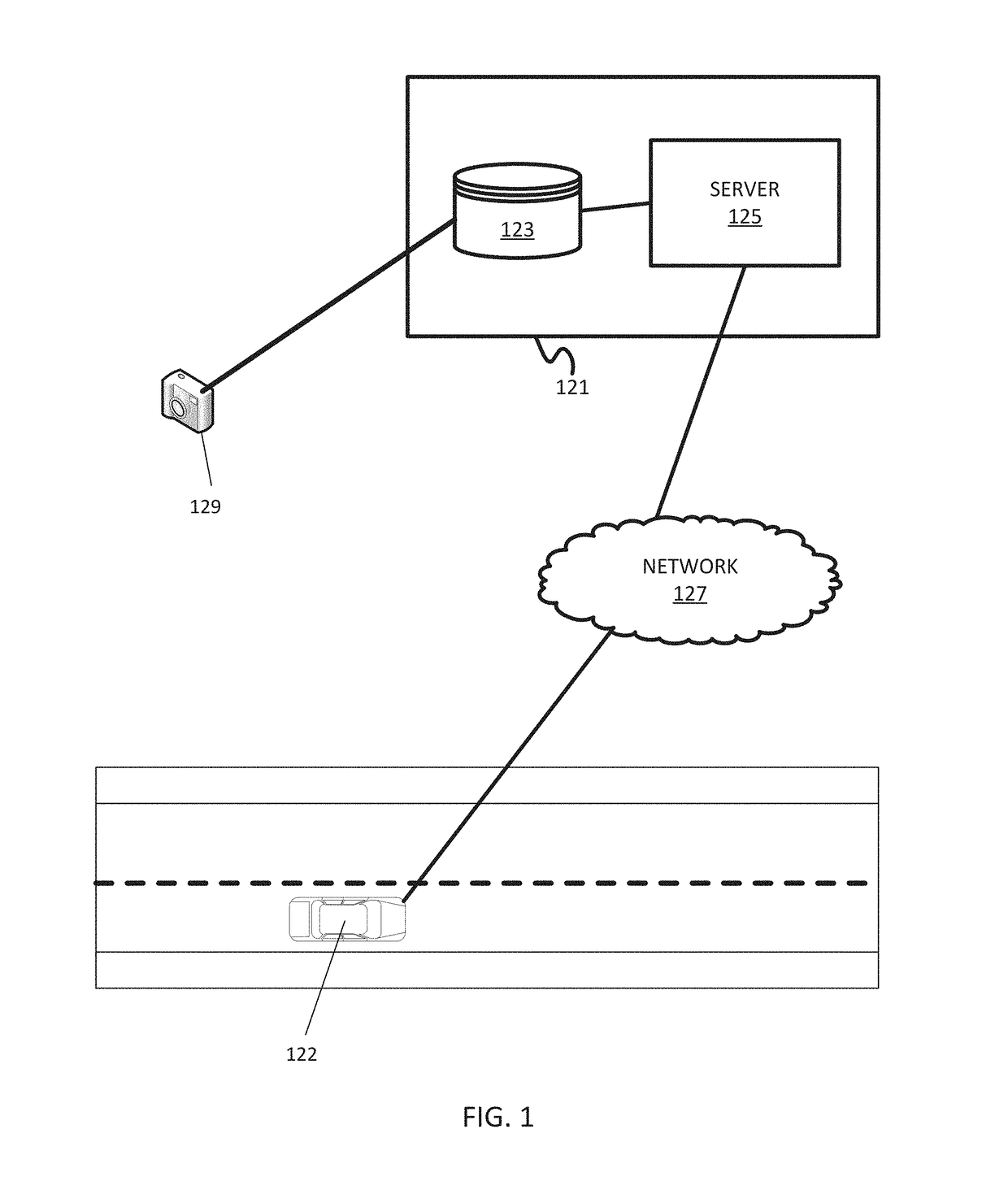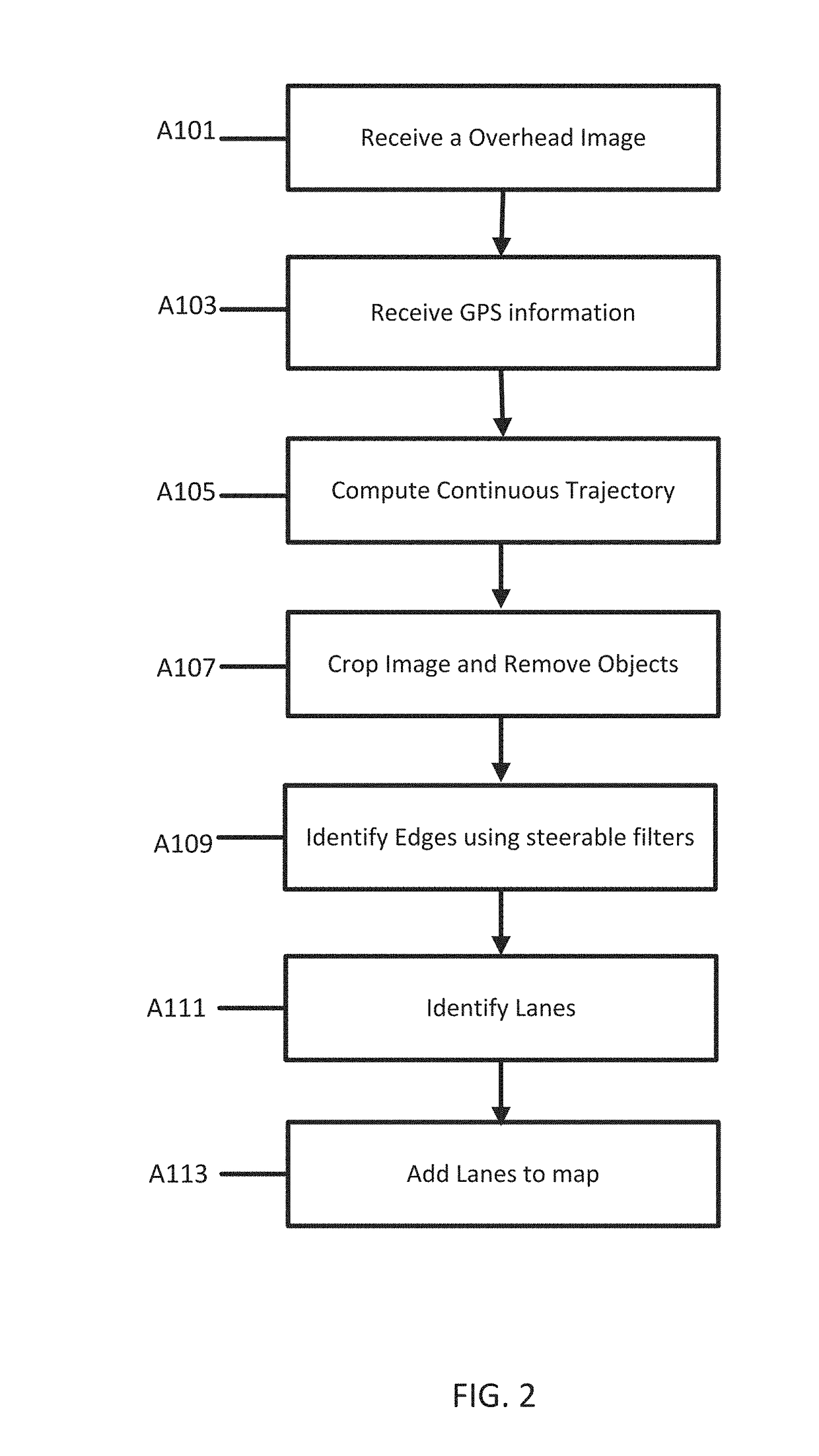Integration of positional data and overhead images for lane identification
a positional data and overhead image technology, applied in the field of mapping, imagery, and vehicle navigation services, can solve the problems of large blind spots, inaccurate estimations of existing mapping services, and large errors even a few centimeters of errors
- Summary
- Abstract
- Description
- Claims
- Application Information
AI Technical Summary
Benefits of technology
Problems solved by technology
Method used
Image
Examples
Embodiment Construction
[0020]The following embodiments relate to using overhead images and global positioning system (GPS) information to efficiently locate and identify lanes in a roadway image. A trajectory of a vehicle derived from GPS is used to estimate road regions in the overhead image. Objects such as trees and vehicles are removed from the overhead image. Edge features are identified using a steerable filter (using the trajectory). Lanes are detected by finding the maximum of the sum of filter responses. Portions of the lanes which are covered or hidden in the overhead images are then estimated from the detected lanes.
[0021]Existing algorithms generally use satellite images for centerline estimation. Embodiments herein integrate GPS information and overhead images together to greatly improve the efficiency and accuracy of lane identification. Other systems use information captured from sensors onboard vehicles. Sensors may offer alerts when a car is moving too close to another object, but additio...
PUM
 Login to View More
Login to View More Abstract
Description
Claims
Application Information
 Login to View More
Login to View More - R&D
- Intellectual Property
- Life Sciences
- Materials
- Tech Scout
- Unparalleled Data Quality
- Higher Quality Content
- 60% Fewer Hallucinations
Browse by: Latest US Patents, China's latest patents, Technical Efficacy Thesaurus, Application Domain, Technology Topic, Popular Technical Reports.
© 2025 PatSnap. All rights reserved.Legal|Privacy policy|Modern Slavery Act Transparency Statement|Sitemap|About US| Contact US: help@patsnap.com



